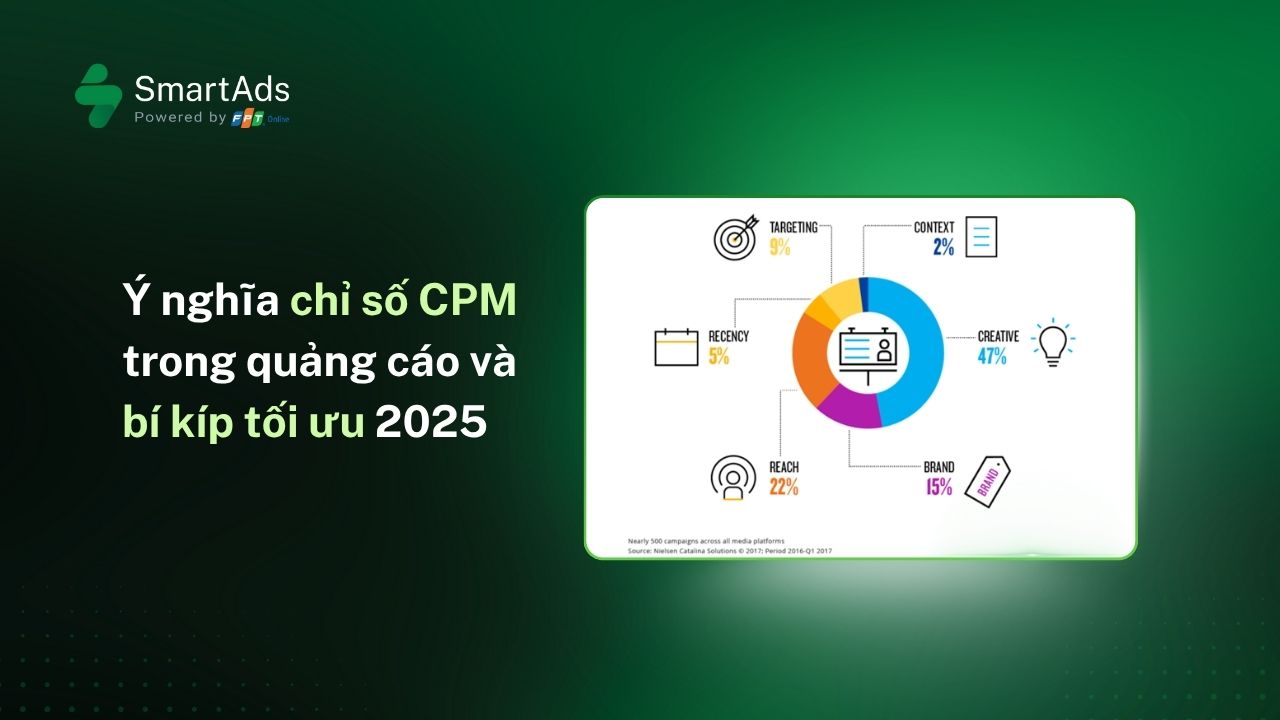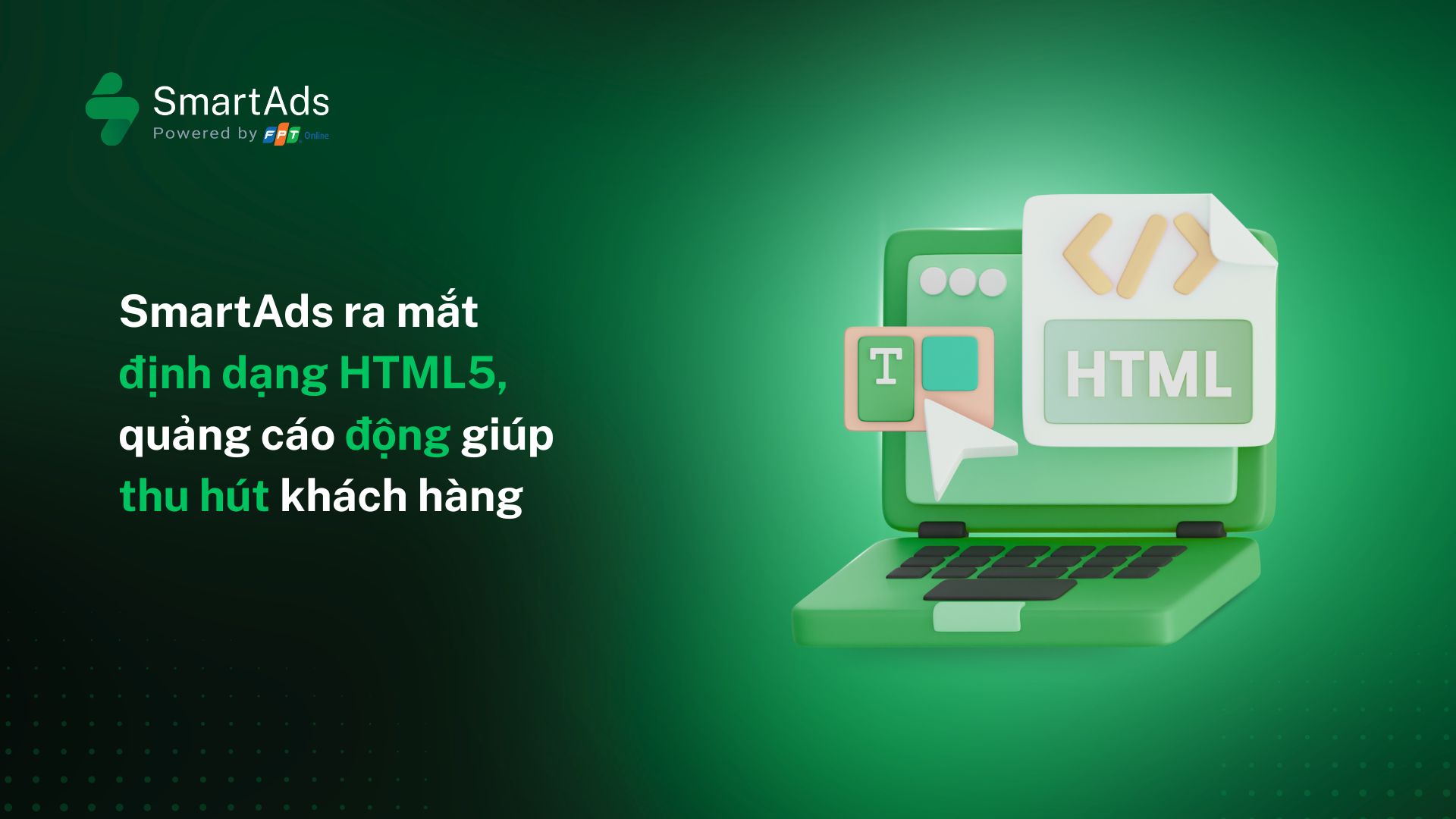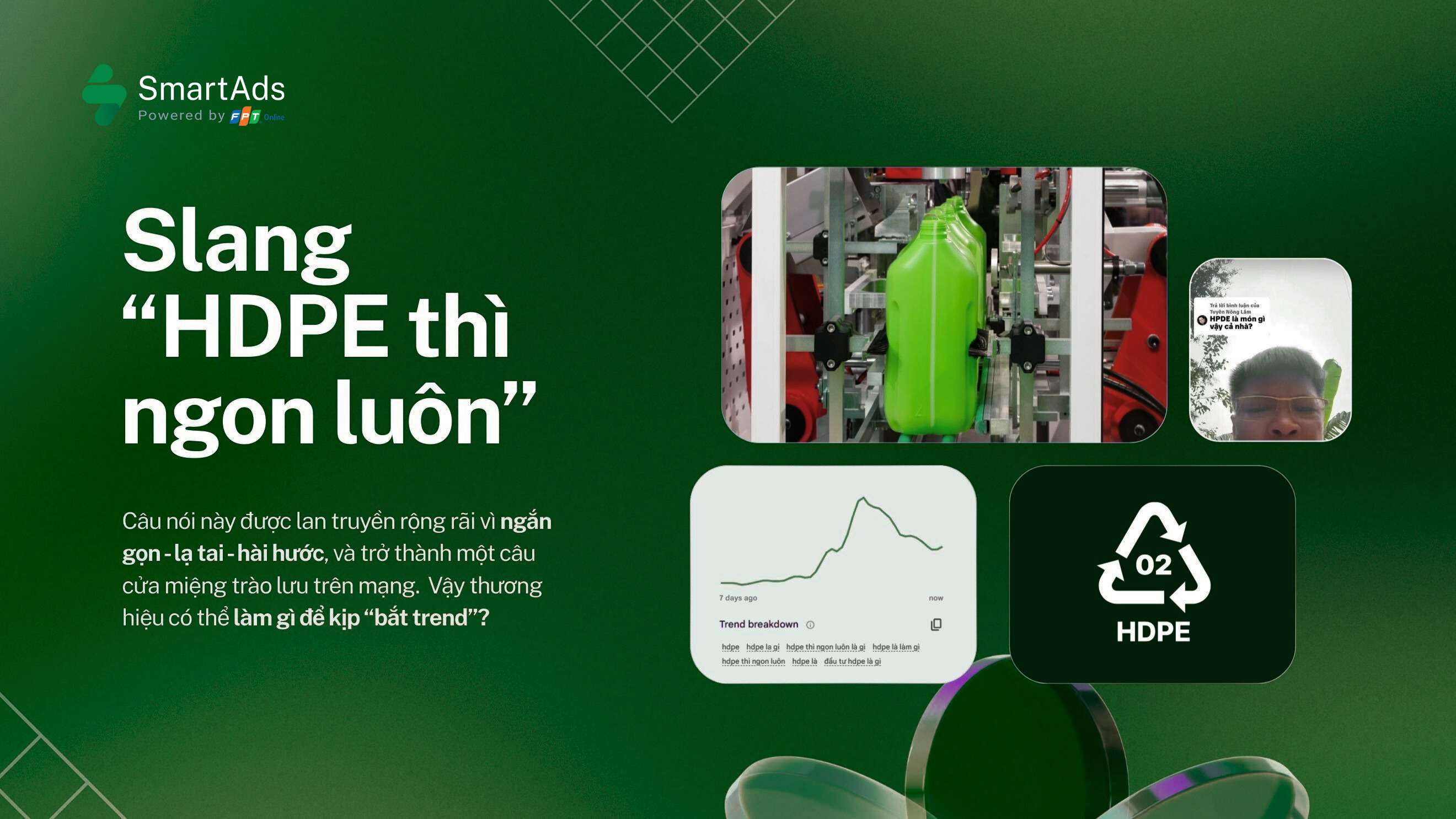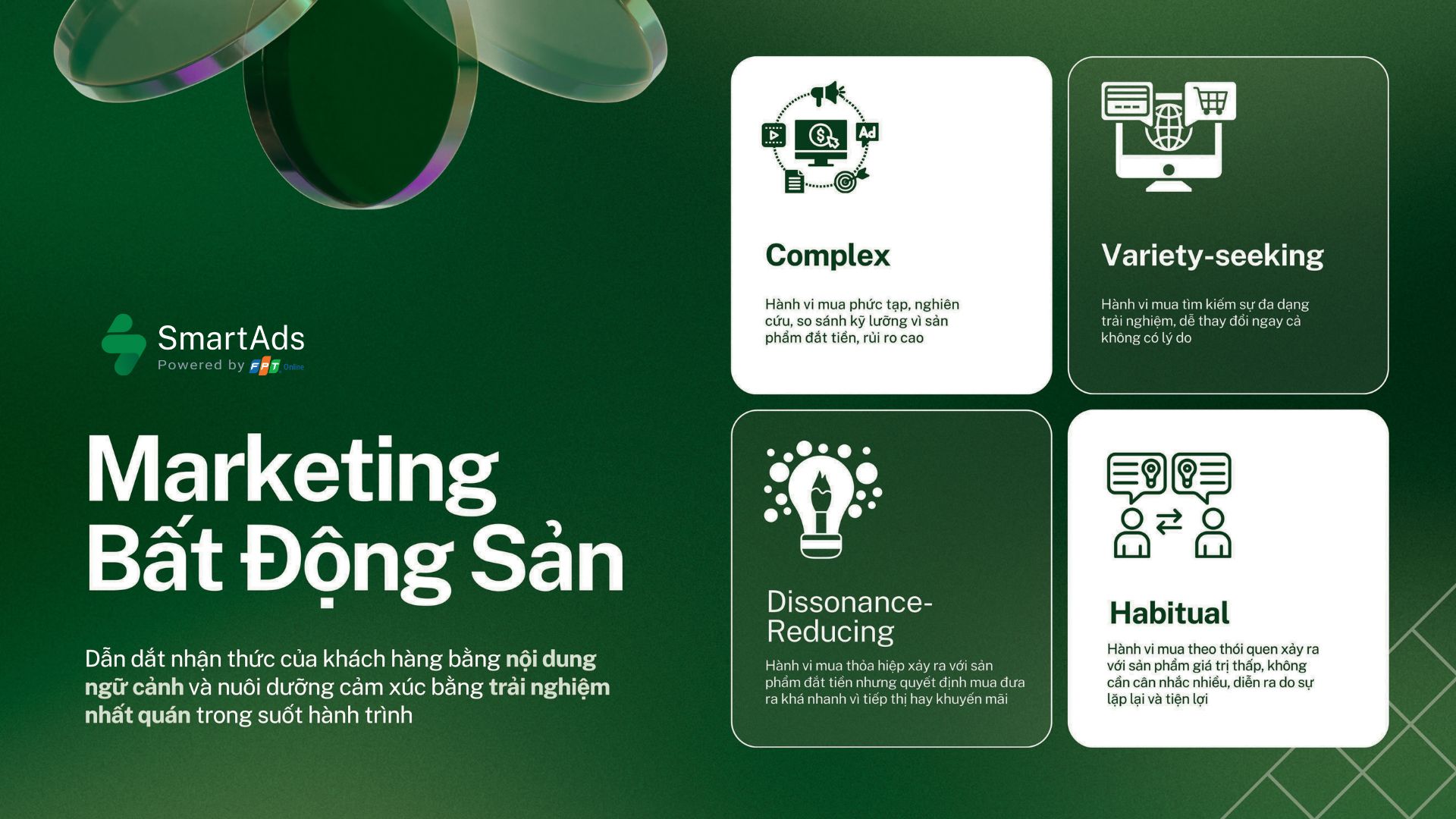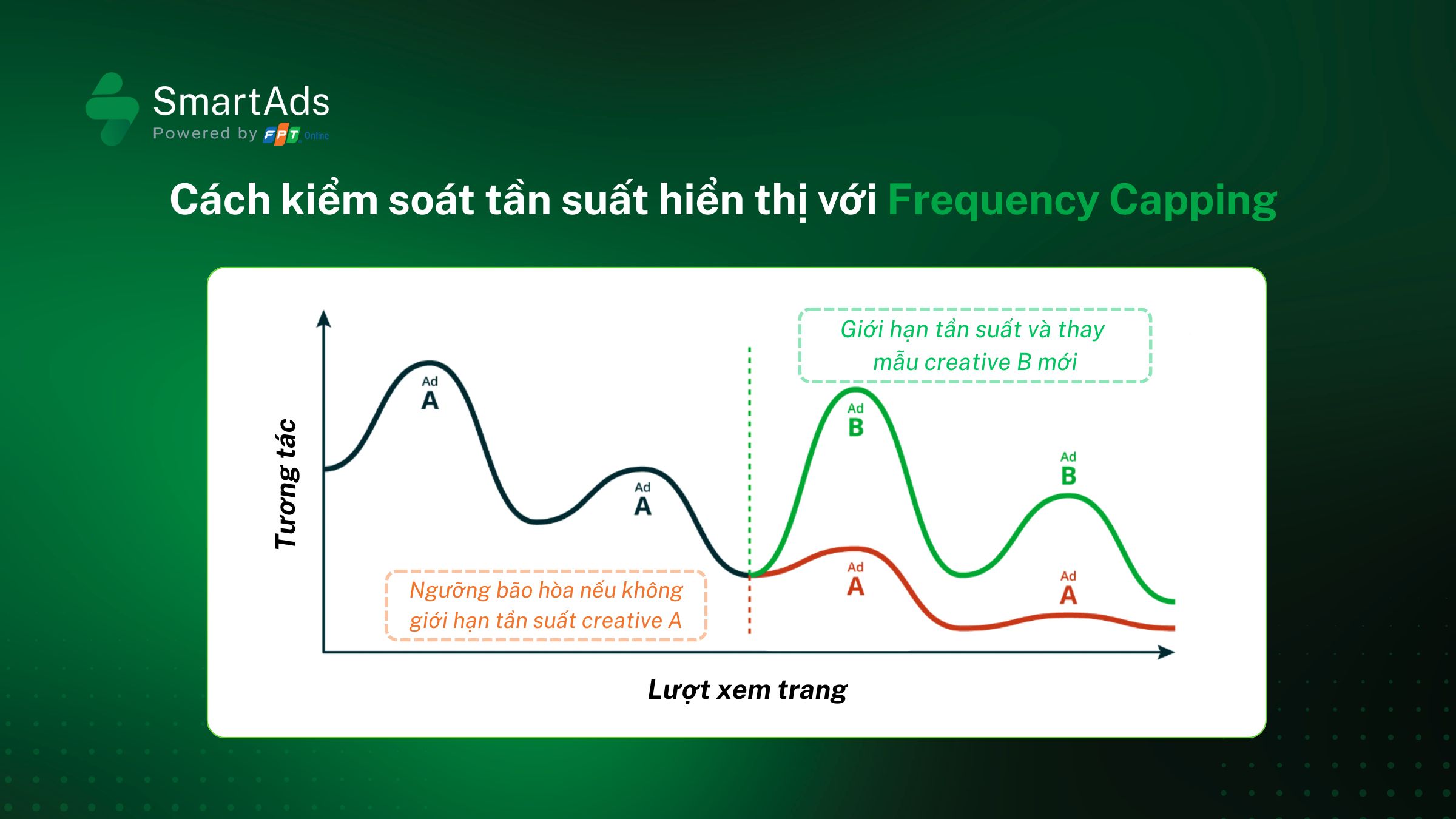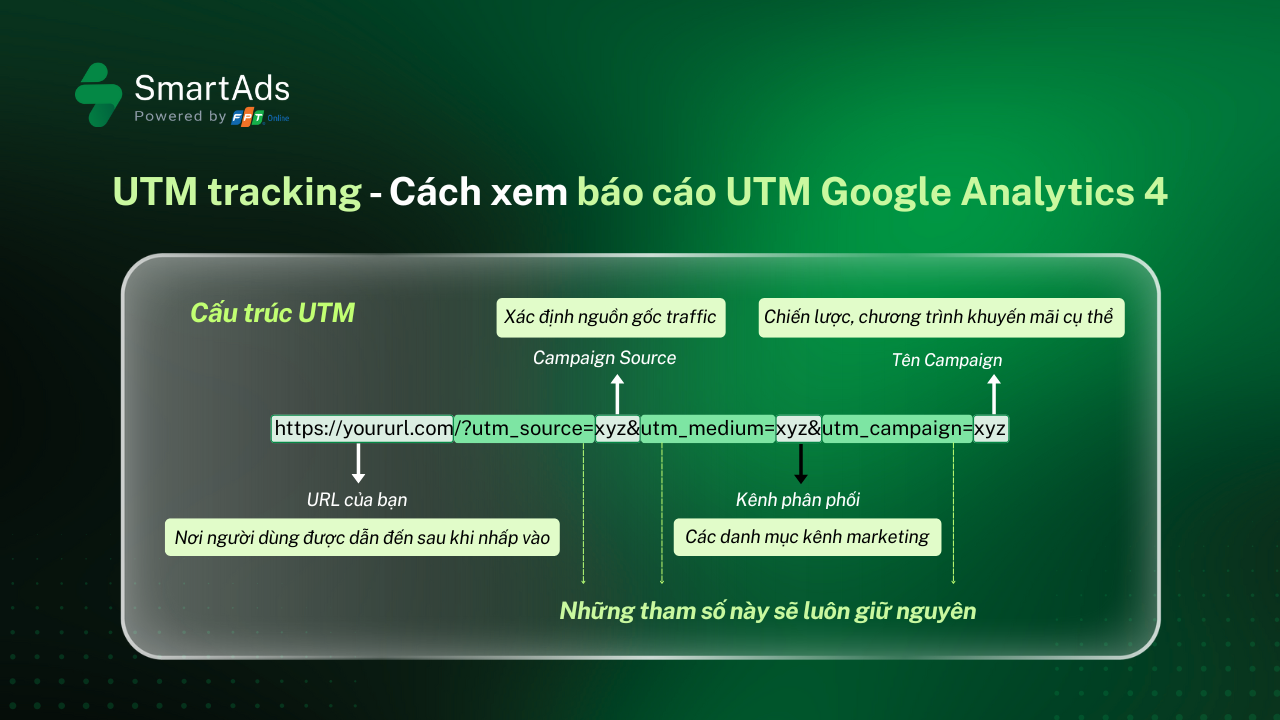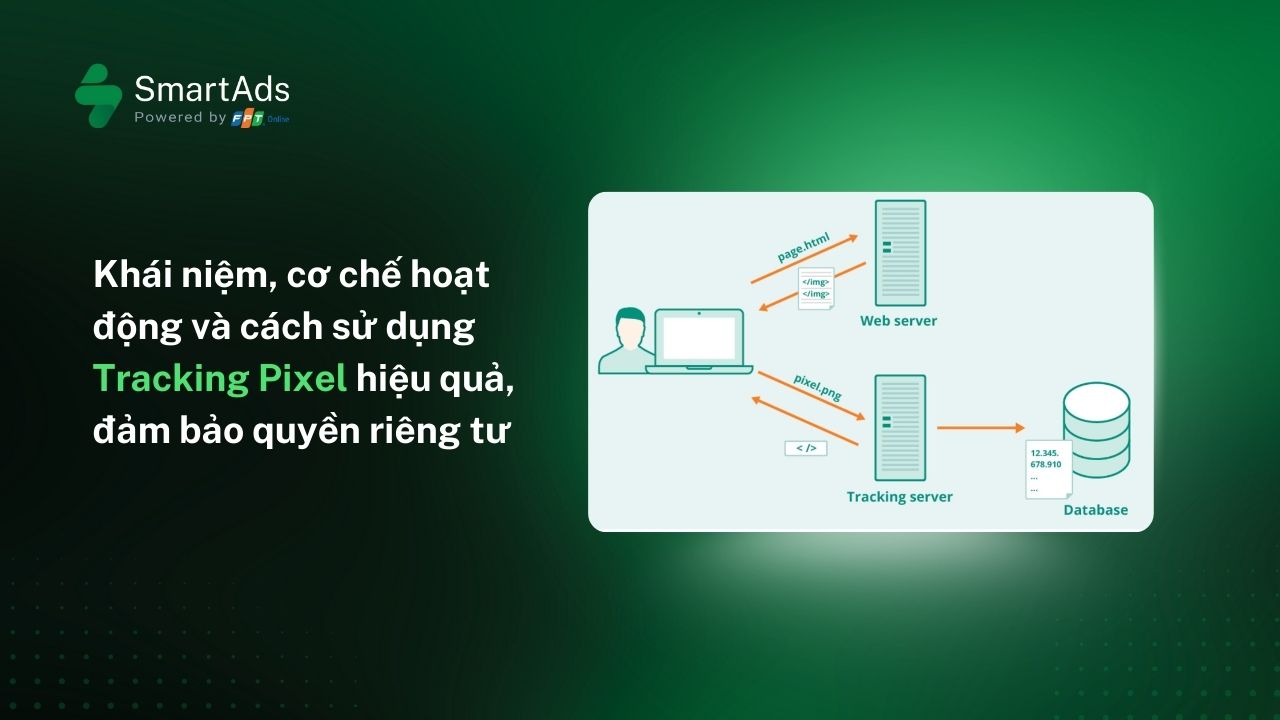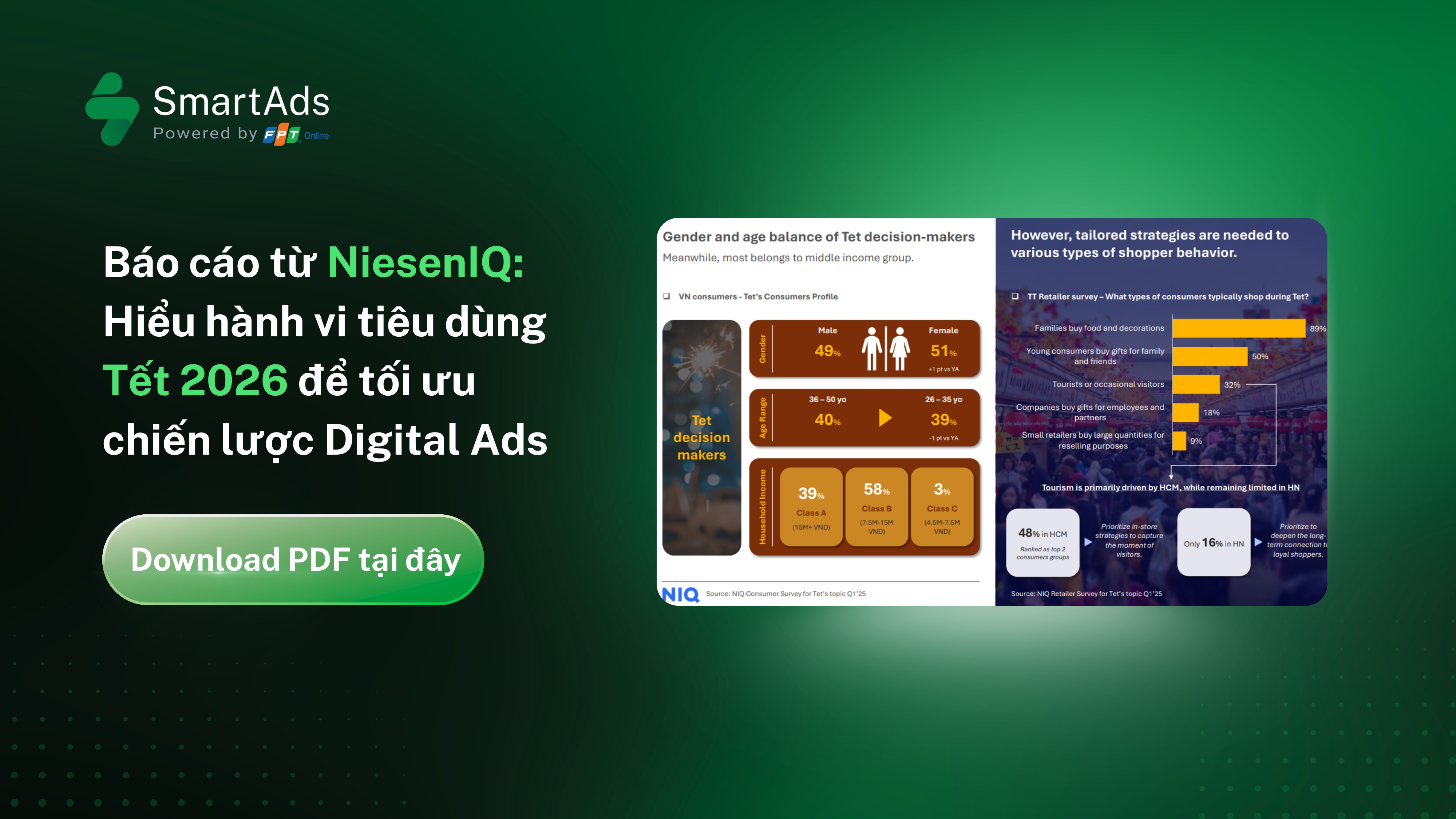What is CPM? A detailed explanation of Cost per Mille in digital advertising
CPM (Cost Per Mille) represents the advertising cost a business pays for every 1,000 ad impressions delivered to users. It’s one of the most common pricing models in online advertising, especially for campaigns focused on brand awareness and expanding audience reach.
The CPM formula is simple:
CPM = Total Advertising Cost ÷ (Total Impressions ÷ 1,000)
Example: A banner campaign costs 2,000,000 VND and achieves 100,000 impressions. The CPM would be (2,000,000 / 100,000) x 1,000 = 20,000 VND. This means the brand pays 20,000 VND for every 1,000 ad impressions.
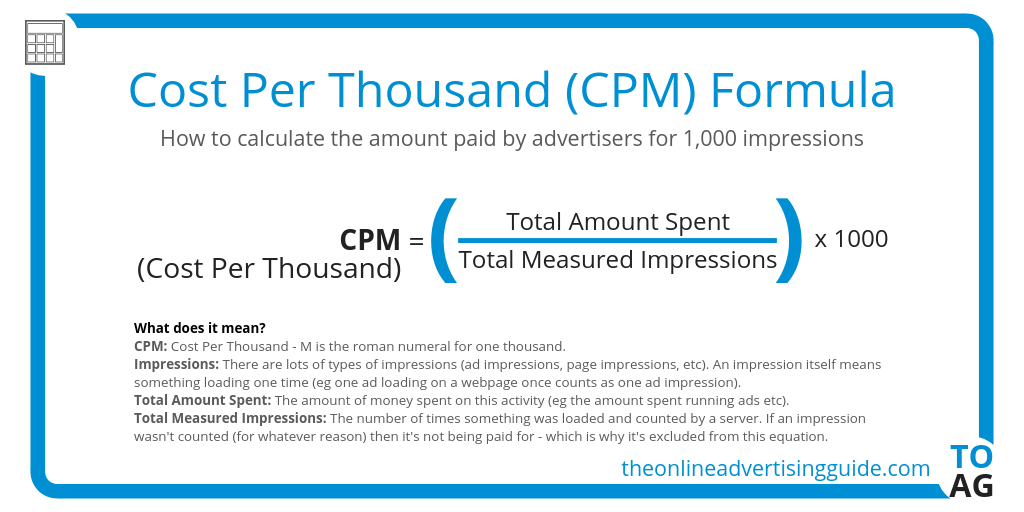
Why is CPM important for advertisers?
As digital advertising becomes more automated, programmatic advertising has evolved into a dominant buying model. Simply put, it’s the automated process of buying and selling digital ad inventory — including display and video formats.
This ecosystem operates mainly through two key platforms:
-
DSP (Demand-Side Platform): Software used by advertisers to automate the purchase and management of ad placements from multiple publishers.
-
SSP (Supply-Side Platform): A tool that helps publishers automate the sale and optimization of their ad inventory to multiple demand sources.
>>> What is programmatic ads? 5 bidding method to buy ads
Within these trading models, CPM serves as the standard pricing metric to determine impression costs and optimize budget allocation. In other words, CPM is not just a spending figure — it reflects the real display value within the automated ad ecosystem dominating today’s market. This metric allows advertisers to compare costs across channels (social, display, video, DOOH, etc.) and make more strategic investment decisions. CPM also helps publishers price their inventory and maximize revenue per impression.
Which types of digital ads use CPM as a pricing model?
In digital advertising, CPM is commonly applied to:
-
Display ads (banner, rich media): Shown across websites or mobile applications.
-
Video ads: Appearing before, during, or after video content.
-
Social media ads: Used to measure reach and impressions performance.
The strength of CPM lies in its ability to quantify the cost of brand exposure rather than focusing solely on clicks. For awareness-driven campaigns, it’s the most suitable metric to ensure consistent and wide-reaching visibility.
CPM vs. CPC vs. CPA: Understanding the difference in advertising campaigns
Many new advertisers often confuse these key metrics:
-
CPC (Cost per Click): Pay per click — ideal for traffic or conversion-focused campaigns.
-
CPA (Cost per Action): Pay for a specific action such as form submission or purchase.
-
CPM: Pay per thousand impressions — ideal for branding or awareness campaigns where the goal is fast exposure. However, this model doesn’t guarantee conversions and works best when the objective is to dominate visibility rather than drive immediate sales.
In short, CPM doesn’t measure direct actions but rather audience reach. Therefore, it should be analyzed alongside other metrics like CTR (Click-Through Rate) and Viewability to assess overall campaign performance.
The meaning of CPM in modern digital advertising
CPM is more than a cost metric — it’s a lens for marketers to understand the true value of every impression. Specifically:
#1. CPM reflects the inventory value of publishers
For publishers (websites, apps, forums, etc.), CPM indicates how valuable their inventory is in the market:
-
High CPM: High-quality inventory (premium ad positions, relevant audiences).
-
Low CPM: May result from lower content quality or weak audience engagement.
Example: A finance-focused blog with an affluent readership can achieve CPM rates 3–4 times higher than a lifestyle blog. This reflects the commercial value of impressions beyond just volume.
#2. CPM impacts ROI and overall digital ad performance
CPM is a crucial input in calculating ROI, especially at the top of the marketing funnel (TOFU). When combined with CTR and Conversion Rate, marketers can estimate overall campaign efficiency.
For example: A low CPM with a high CTR means lower cost per click — maximizing budget efficiency. Conversely, a high CPM with a low CTR may indicate weak creatives or poor audience targeting.
#3. Determining the average cost to reach 1,000 users
This metric helps marketers evaluate how “expensive or affordable” it is to reach their target audience across different channels. Knowing your average CPM helps clarify the actual cost to display your message to 1,000 people.
However, CPM should never be viewed in isolation. Each platform — from social media and news sites to out-of-home (OOH) displays — calculates impressions differently. That’s why marketers should track CPM by time, region, and ad format to get a more complete picture of ad spend effectiveness.
#4. Comparing effectiveness across advertising channels
A lower CPM doesn’t always equal better performance. For instance, Facebook Ads may have cheaper CPMs than YouTube, but YouTube’s engagement and ad recall rates are often stronger.
When comparing channels, consider campaign goals: if your priority is brand awareness, choose platforms with higher reach and longer exposure time; if your goal is conversion, performance-based channels like Google Ads or Native Ads will be more efficient. The difference lies in impression quality — whether each impression is truly seen and remembered.
#5. Optimizing budget allocation based on true impression value
Instead of spreading the budget evenly or relying on nominal CPM rates, modern marketers focus on effective CPM (eCPM) — a metric reflecting the real value of every 1,000 impressions that drive engagement, conversions, or brand lift.
To achieve this, businesses need to unify cross-channel data and measure Cost per Result rather than Cost per Impression. Programmatic ad tools and analytics dashboards help brands automatically allocate budgets to placements, regions, and time slots that deliver the highest-quality impressions.
When Is CPM the Optimal Advertising Strategy?
CPM is the right choice when a brand aims to test or expand its reach and strengthen brand awareness:
-
Mass Reach: CPM allows rapid exposure to hundreds of thousands or even millions of users within a short time.
-
Consistent Brand Recall: CPM helps businesses proactively reach large audiences and build an initial awareness boost before investing heavily in conversions. This model is especially effective for product launches, large-scale events, or remarketing campaigns to remind audiences of your brand.
How to Optimize CPM in Digital Advertising for 2025
In 2025, optimizing CPM goes beyond lowering impression costs — it’s about maximizing the value each impression generates. The new trend combines data, AI, and creative content to enhance impression quality and performance.
#1. Optimize by Ad Format
Each ad format delivers different CPM performance levels:
-
Video ads & rich media: Higher CPM, but stronger brand recall and engagement.
-
Native ads: Stable CPM and higher engagement due to contextual relevance.
-
Programmatic display ads: Lower CPM with broader reach.
Note: The best CPM format depends on campaign objectives. For brand awareness, display ads are ideal; for performance campaigns, video or native ads can balance cost-efficiency and engagement.
#2. Optimize by Audience and Context
Delivering ads in the right context can significantly improve CPM effectiveness.
-
First-party data: Identifies high-value audience segments.
-
Contextual targeting: Ensures ads appear within relevant content environments, increasing user attention.
-
Frequency capping: Limits ad frequency to avoid wasted impressions and audience fatigue.
By placing ads in the right place, to the right audience, at the right time, advertisers can reduce CPM while boosting brand impact.
#3. Optimize with AI and Programmatic Technology
AI is transforming the way marketers optimize CPM.
-
AI-based bidding: Predicts the most efficient CPM in real-time auctions.
-
Programmatic platforms: Automatically distribute ads to the most valuable inventory sources.
-
Machine learning: Continuously learns from campaign performance data to enhance future targeting and delivery.
Example: The SmartAds platform uses automated optimization technology to help advertisers reduce average CPM by 15–25% through real-time performance analysis and intelligent placement adjustments.
#4. Optimize Creative Content
Creative quality indirectly influences CPM through engagement and attention metrics.
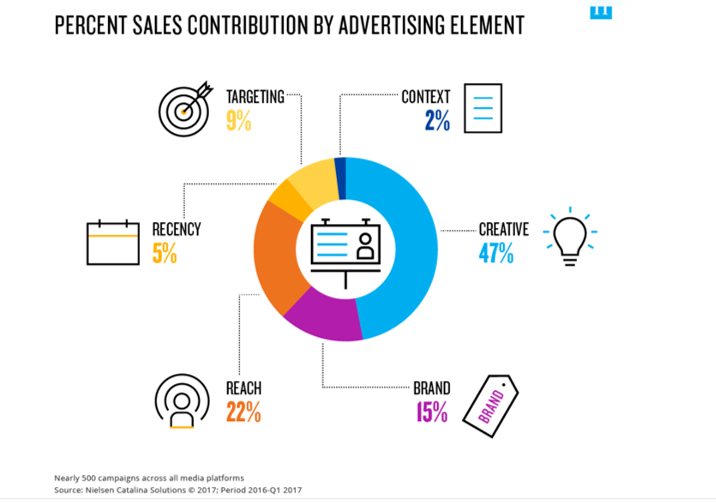
-
Compelling visuals & hooks: Capture attention → increase CTR → lower effective CPM.
-
A/B testing: Experiment with multiple creative variations to find the top-performing version.
-
Clear CTAs: Help audiences quickly understand the message and encourage interaction.
>>> Learn how to optimize CTAs for better ad performance in 2025.
Common Mistakes When Evaluating or Optimizing CPM
Many marketers misunderstand CPM, leading to underperforming campaigns:
-
Assuming a low CPM = high efficiency: CPM measures impressions, not outcomes like conversions or sign-ups. A cheaper CPM doesn’t always mean better ROI.
-
Ignoring traffic quality: Low-cost inventory may include low-value or non-human impressions.
-
Overexposure (no frequency control): Repetitive impressions can cause ad fatigue, leading audiences to ignore your content.
CPM only holds true value when analyzed within the broader context of overall media performance.
Essential Checklist for Running CPM Campaigns
-
Clearly define campaign objectives: brand awareness, reach, or engagement — then choose matching audience segments.
-
Remember: CPM fluctuates based on industry competition and seasonality.
-
Craft compelling headlines that highlight key customer benefits.
-
Use high-quality images, videos, and messages — the more relevant and consistent your creative assets are, the better your real CPM and engagement rate. Ensure visuals are sharp and aligned with ad content.
-
Maintain message consistency with the landing page. The destination page should load fast, have a professional layout, and deliver content aligned with the ad.
-
Continuously monitor ad timing and placement: Track on-site metrics (time on page, bounce rate, form interactions) to make timely adjustments.
CPM FAQs
What does CPM mean in advertising?
→ It’s the cost advertisers pay for every 1,000 ad impressions.
What is considered a good CPM?
→ Typically between 10,000–50,000 VND, depending on ad format and inventory quality.
How is CPM different from CPC?
→ CPM charges for impressions, while CPC charges for clicks.
How can I lower CPM in digital advertising?
→ Improve creative quality, refine targeting accuracy, apply AI-driven bidding, and choose high-quality inventory.
Conclusion: CPM – An Indispensable Metric for Digital Advertising in 2025
CPM remains a foundational metric in modern digital advertising strategies. When properly understood and smartly optimized, it helps marketers control costs, improve impression quality, and enhance campaign ROI. Embracing the evolving CPM trends of 2025 will keep businesses ahead in the competitive digital media landscape.
About SmartAds, formerly known as eClick, developed by FPT Online – one of the leading pioneers in digital technology and media in Vietnam. Through continuous innovation and development, with an extensive network of premium publishers, SmartAds affirms its pioneering position in applying brandformance solutions in the Vietnamese market, aspiring to become a trusted partner accompanying brands in their online customer acquisition journey. If you're looking for an advertising solution that optimizes both awareness and performance, don’t hesitate to create an account and experience campaign setup on SmartAds here.
